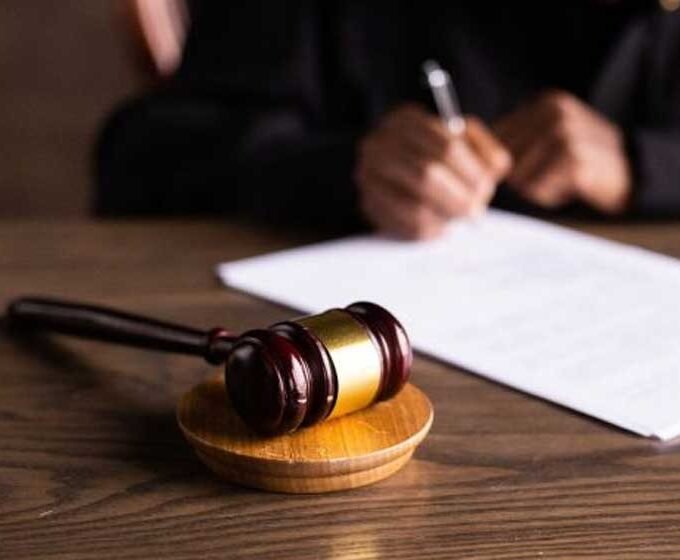Have you ever wondered what happens after you file a personal injury lawsuit? The process can feel daunting and complex, filled with many stages and legal jargon. However, understanding the personal injury lawsuit timeline can greatly ease your stress and help you navigate each step with confidence.
By the end of this guide, you’ll have a clear roadmap to follow, making your journey through the legal system as smooth as possible.
Seeking Medical Help
Your health is your top priority after an injury. Before filing any claims, ensure you seek medical help immediately. Proper medical documentation will serve as critical evidence in your case.
Make sure to follow all medical advice and keep copies of all your medical records. This will not only help in your recovery but also strengthen your personal injury claim.
Reporting the Incident
The next step is to report the incident. Whether it’s a car accident, a workplace injury, or a slip and fall, you must report it to the relevant authorities.
For car accidents, this means the police. For workplace injuries, notify your employer. Official reports will serve as important evidence in your lawsuit process.
Consult with a Personal Injury Attorney
Consulting with an experienced personal injury attorney is essential. They will guide you through each stage of the lawsuit process and offer valuable advice.
An attorney will handle all the paperwork, communicate with insurance companies, and represent you in court if necessary. Hiring a professional ensures that you don’t miss any critical steps in the legal timeline.
Filing the Claim
Once you have gathered sufficient evidence, your attorney will file a personal injury claim on your behalf. This step officially starts the legal proceedings.
Here’s a list of what should be included in a personal injury claim:
Your Personal Information
Make sure to include your full name, middle names or initials included, along with your current contact information. This means your phone number and email address. You might also want to add important details like your job title or who you work with.
Details About the Accident
When you report an incident, it’s really important to give as many details as possible to help understand what happened. Remember to mention when it happened, where it happened, and other key details like who was involved, what the weather was like, and how everything happened.
Description of Injuries
Could you list all the injuries you got from the accident? Please talk about both the physical injuries and how you’ve felt emotionally and mentally since then. Mention how bad the injuries are, which parts of your body got hurt, any doctor’s visits or treatments you had, and how these injuries are affecting your everyday life and happiness.
Medical Records
To strengthen your compensation claim, it’s really important to have all your paperwork in order, especially your medical records. Make sure these records clearly show your injuries, the treatments you received, and any doctor’s reports that support your claim.
Evidence of Lost Wages
If you’ve missed work because of injuries, it’s super important to collect detailed documents to support your claim. This means getting hold of your pay stubs to show how much money you were making and how your injury affected your finances. Also, try to get a letter from your boss that lists the exact days and hours you couldn’t work.
Police Report
If law enforcement personnel were present at the scene of the accident, it is crucial to obtain a copy of the official police report. Including this document in your insurance claim can provide vital details about the incident, helping to establish the facts and potentially expedite the claims process.
The Discovery Phase
After filing the claim, the discovery phase begins. This is where both parties investigate the details of the case. You will exchange information, interview witnesses, and gather more evidence.
This stage can last several months but is integral to building a strong case. Make sure to cooperate fully with your attorney to streamline this phase.
Pre-Trial Motions and Settlement Negotiations
Before going to trial, there will be several pre-trial motions and settlement negotiations. Both parties may file motions to resolve certain issues before the trial starts.
Settlement negotiations will also take place, aiming to resolve the injury claim without going to court. A successful settlement can save time and reduce legal costs.
Trial Preparation
If a settlement is not reached, the case proceeds to trial. Preparing for trial involves meticulous attention to detail. Your attorney will prepare exhibits, witnesses, and your testimony.
This stage requires thorough preparation to ensure that your case is presented effectively in court. Trust your attorney to guide you through this intense period.
The Trial
The trial stage involves presenting your case before a judge or jury. Both sides will present their evidence and arguments.
The judge or jury will then decide on the outcome based on the facts presented. Trials can be lengthy, but your attorney will strive to present a compelling case to secure the compensation you deserve.
The Verdict and Post-Trial Motions
After the trial, the judge or jury will deliver a verdict. If the verdict is in your favor, you’ll receive compensation. However, either party can file post-trial motions if they believe there were errors in the trial.
These motions can include requesting a new trial or modifying the judgment. This stage can further prolong the lawsuit stages.
Collecting Your Compensation
Once the verdict is finalized, the next step is collecting your compensation. This may involve additional legal actions if the losing party fails to pay.
Your attorney will assist in this process, ensuring you receive the settlement you deserve. Timely collection is crucial for covering medical expenses and other costs associated with your injury.
When to Hire a Wrongful Death Attorney
In cases where the injury results in death, it might be necessary to hire a wrongful death attorney. They specialize in cases involving death due to negligence or misconduct.
A wrongful death attorney can help the victim’s family navigate the complex legal procedures. They can also help seek rightful compensation for their loss.
Understanding Your Personal Injury Lawsuit Timeline
Knowing the personal injury lawsuit timeline is crucial for a successful case. Each step holds significant importance and requires meticulous attention. Understanding this timeline helps you avoid costly mistakes. By following the outlined stages, you can navigate your lawsuit effectively.
Trust your attorney to guide you each step of the way. A clear grasp of the personal injury lawsuit timeline ensures you are well-prepared and confident throughout the process.
Head over to our blog for more interesting reads.
















